Walking around the Vatican: what lies behind the walls of a separate state in the center of Rome
Categories: Culture | Design and Architecture | Europe | Exhibition
By Pictolic https://pictolic.com/article/walking-around-the-vatican-what-lies-behind-the-walls-of-a-separate-state-in-the-center-of-rome.htmlAn amazing mixture of religion, art and culture, the Vatican is one of the most mysterious places in the world, which has played an important role in the history of Europe for centuries.
The only Catholic state in the world, the residence of the pope hides behind its walls an amazing number of historical artifacts and art objects, such as Michelangelo's work on the Sistine Chapel and all kinds of documents testifying to the trial of representatives of the church over the greatest scientists in Europe.
Secret bridges to escape from the city, architectural structures transported from other continents - we offer you to see what the Vatican looks like from the inside.


Architectural 3D model of the city

The first thing visitors see after passing through the Vatican walls is the huge St. Peter's Square. Roman columns close the edges of the square, and in the very center there is a 41-meter obelisk brought by Emperor Caligula from Egypt.

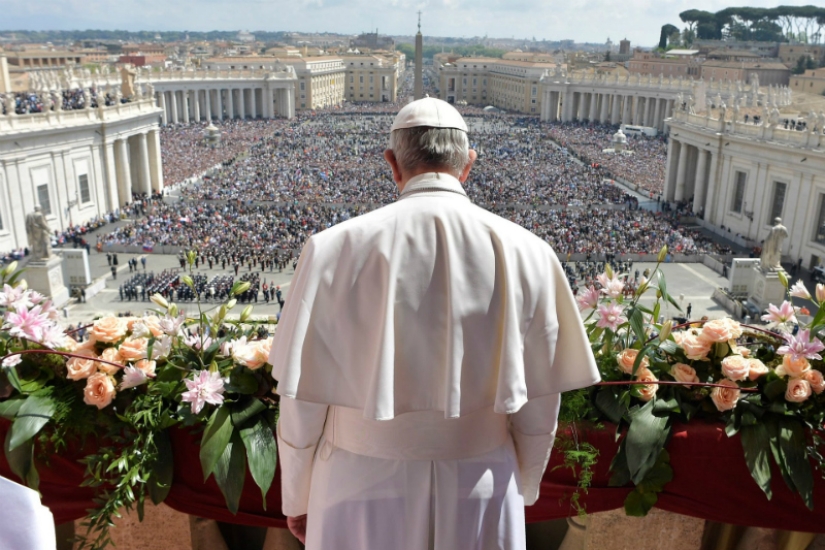
On the same square, parishioners gather to listen to the speeches and sermons of the pope from his balcony.

The central attraction is St. Peter's Basilica, towering over the square. It took 120 years to erect the facade of the building and fully equip the interior.

The basilica was built on the hill where Emperor Nero supposedly gave the order to execute Peter himself. This historical monument is filled with the skill of painters and sculptors of different eras.

The famous massive dome decorated by Michelangelo himself crowns the basilica.

From the top of the dome — which can be reached by climbing 551 steps - there is a magnificent view of Rome and the Vatican gardens, stretching from the back of the basilica.

The gardens cover about 60 acres — more than half of the entire area of the Vatican — and, as a rule, are inaccessible to visitors, as they were originally conceived as a personal recreation area for popes.

Among the gardens are located, among others, the government palace and even the Pope's helipad.
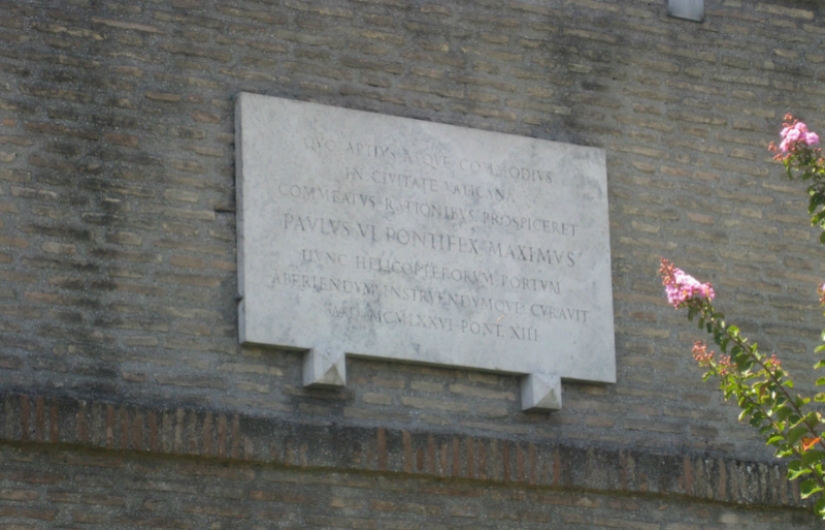
Next to the helipad there is a traditional plaque with an inscription in Latin: "So that the pope can comfortably look around his possessions in the Vatican from the air. Supreme Pontiff Paul VI."
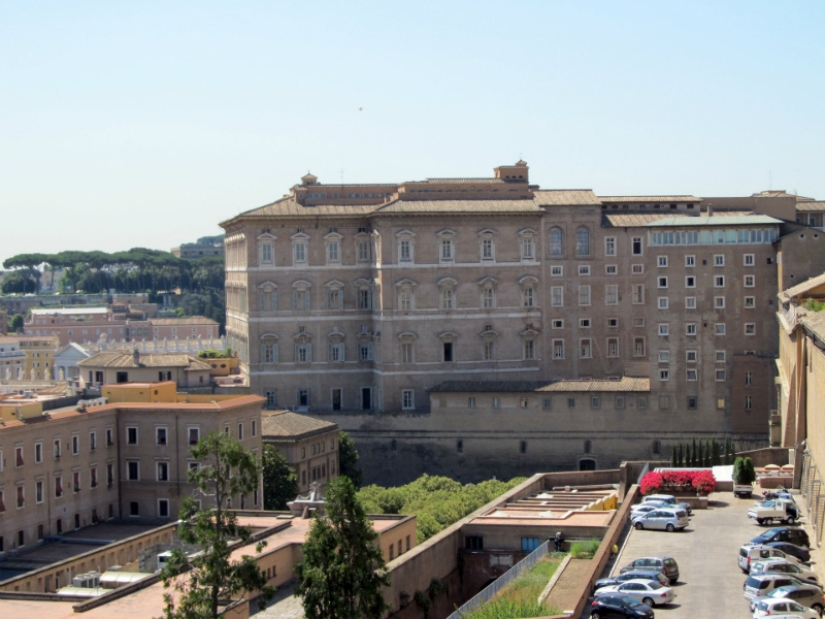
To the north of the basilica, adjacent to the gardens, are the Vatican palaces — a whole chain of interconnected buildings, together numbering more than a thousand rooms.

Palaces contain many chapels, government buildings and apartments. The complex of palaces has traditionally served as the home of the Pope since the XIV century.

A significant part of the complex of palaces today is reserved for the Vatican museums.

The total length of the intertwining museums of the complex is 14 kilometers. They say that if you spend only a minute of time on each copy, then it will take four years to get acquainted with all the contents of museums.

The art of the museum's galleries is literally everywhere — it can be found on the columns and on the steps — on the ceilings and on the walls.

The jewel of the museum is the Sistine Chapel, the chapel where Michelangelo and other Renaissance artists worked for 60 years to hone their works. Due to the large concentration of tourists in the chapel, the security service periodically asks the public to switch to a whisper.

By the way, the Sistine Chapel is the home of the very conclave where cardinals gather to vote on the election of the next pope. When the decision is finally made, white smoke is emitted from the chimney on the roof of the chapel.
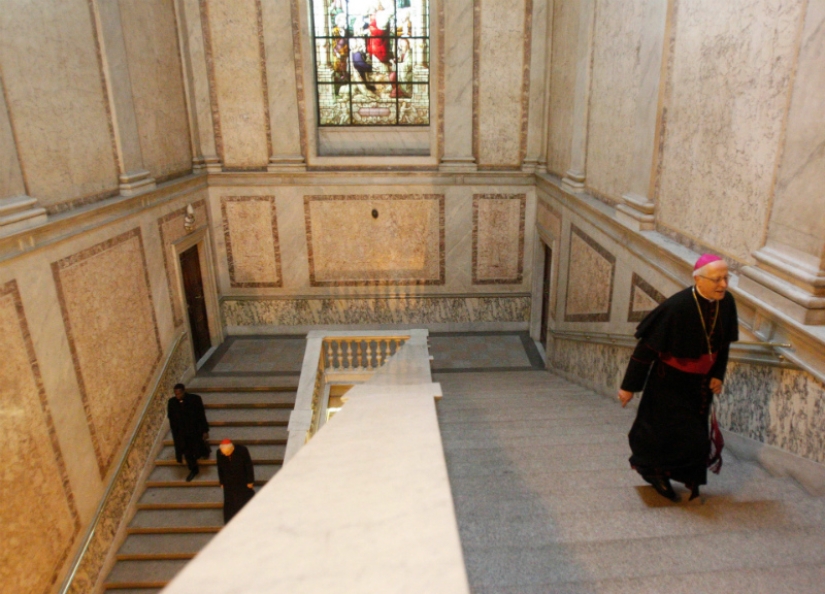
Next to the chapel is the Apostolic Palace, originally built for the residence of Pope Sixtus V and then periodically used by popes for living and receiving guests. Such is the White House in the Vatican.

This is how the palace looks from the inside.

The richly decorated Apostolic Library is a favorite place of popes for receptions of foreign guests.

Guarding the Apostolic Palace — and, one should think, the entire Vatican — is the smallest army in the world consisting of four soldiers. Such a small Swiss guard has traditionally been hired by the Holy See since 1506, and in order to get into it, you need to be a bachelor, a doorman by nationality and a Catholic aged 19 to 30 years.

In fact, of course, most of the security activities are performed by the so-called papal gendarmerie, but officially it is not an army. An interesting fact: in percentage terms, the Vatican is the most militarized country in the world, because 101 of its 557 citizens are formally registered in the armed forces. North Korea is in second place.

The army has not always been able to keep the head of the church safe - several times in history popes have escaped through the so-called Passetto, a fortified corridor about 800 meters long connecting the Vatican with the Castel Sant'Angelo. The last time it was used by Pope Clement VII, after the Vatican was captured by the troops of Emperor Charles V in 1527, killing all members of the Swiss guard on the steps of the basilica.

View of the Passetto from the Castel Sant'Angelo.

By the way, Pope Francis, in a break with tradition, refused to stay in the Apostolic Palace and instead spends the night in a more modest guest house.

Unlike the Apostolic Palace, the guest house is not so pretentious and more cozy. In the photo, Pope Francis during the reception of Argentine President Cristina Fernandez de Kirchner.

View on the approach to the basilica.
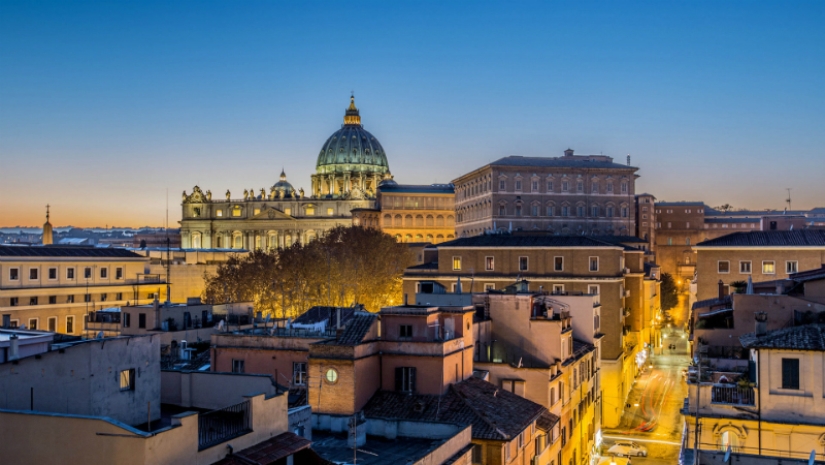
Popes come and go, but the Vatican, which they call home, will adorn the views of the Eternal City for a long time.
Recent articles

The island of Tasmania was first discovered in the mid-17th century, but for a long time Europeans only occasionally visited it. ...

Iceland is a country with a very low crime rate. It's hard to believe, but in a quarter of a century, only 30 murders occurred ...

The pearl of French architecture and the magnificent palace of a vain monarch, Versailles was created to emphasize all the ...